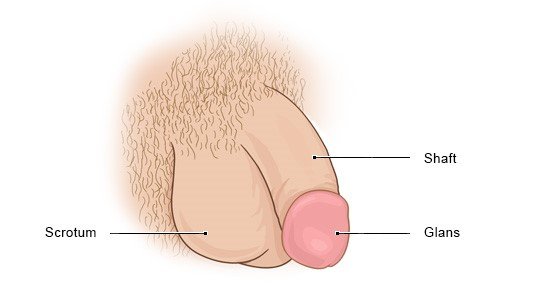The external male sex organs
The external male sex organs include the penis and the scrotum. Each penis looks a little different, for instance in its length or thickness.
The penis is made up of the root of the penis, the shaft, and the round glans (head) at the tip of the penis. The glans is covered with a mucous membrane. The movable foreskin covers the head of the penis. Some men have had the foreskin cut off (circumcised) in a surgical procedure that shortens the foreskin or removes it completely. This maybe done if the foreskin is too tight, for example.
A tube called the urethra runs through the inside of the penis. Urine leaves the body through the urethra, and so does semen (the fluid that carries sperm) during ejaculation.
The shaft and the head of the penis contain erectile tissues called corpora cavernosa. These tissues are like sponges. During sexual arousal, blood builds up in the corpora cavernosa until they are full and firm. This allows the penis to become erect and stiff (erection). In most men, it also becomes longer and thicker. The penis can then be put into the vagina during sex between a man and a woman so that an egg cell can be fertilized after ejaculation.
The scrotum is a bag of skin that surrounds the testicles and the epididymis. The vas deferens tubes (sperm ducts) are also connected to the epididymis.
The head of the penis and the skin on the penis, scrotum and the surrounding area contain a dense network of nerve fibers. This makes the external sex organs very sensitive. As a result, touching and rubbing this area can cause sexual arousal and increased pleasure that may lead to orgasm and trigger ejaculation.



